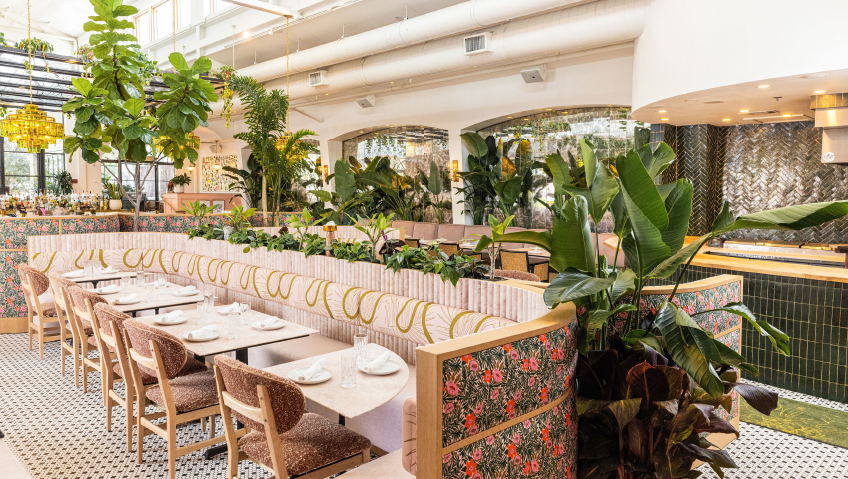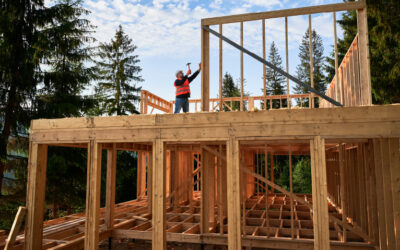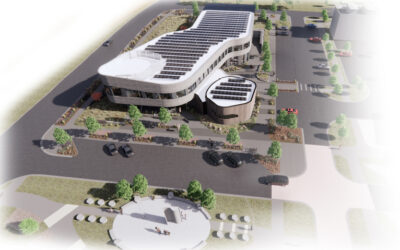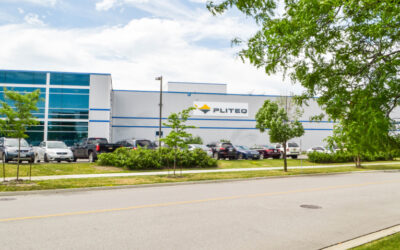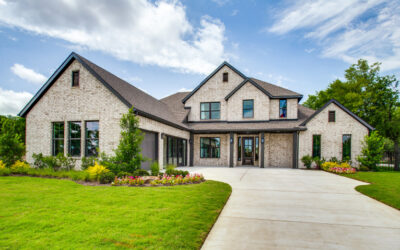Barbara O’Toole launched AEC in 1991 with a vision to bridge the gap between acoustics, construction, and design. “She started the company by taking her knowledge of acoustics and marrying that together with what she saw as a void in the industry,” says Executive Vice President Crystal Durham.
“Designers really needed more options and sophisticated acoustical solutions. So she took all of that information and built the company from the ground up.” O’Toole’s approach resonated with the market, and the Dallas-based company grew steadily over the next three decades.
Today, AEC employs nearly 100 people and has expanded its offerings beyond its original focus. “We do a lot more than just acoustical products now,” says Durham. From window treatments and banquettes to upholstered solutions and lighting elements, the team delivers a complete solution.
AEC remains woman-owned, with O’Toole currently at the helm as Chief Executive Officer, a fact that makes the company stand out within the construction industry. “Many women in our industry don’t have the same opportunities that we are afforded here at AEC,” Durham says. “We know that it’s a very male-dominated industry, and that is a big part of the experience for so many females trying to build a successful career in construction. It’s the way it has always been, but thankfully, we are starting to see that change.”
Barbara O’Toole may not have set out to be a trailblazer, but she became one nonetheless. “She didn’t start off thinking that she was going to be a good example for women, of someone breaking barriers and paving their own way, but I think that women do look up to her because she has accomplished so much, myself included,” Durham says. “Without her knowing it, she is helping the women in our industry to know that you can do anything you want to. You just have to work hard and don’t let anyone tell you that you can’t.”
When it comes to running the company, however, O’Toole and Durham prefer a different focus. “It’s such a hot topic, women in construction and women in the industry and women in general,” Durham says, “but Barbara would agree with me when I say this—we both prefer to focus on the way it impacts our business, which has more to do with what kind of person you are rather than gender. We care more—have always cared more—about the type of people [who work at AEC]. Are you a good human being? Are you a hard worker? Do you care? Are you creative? Are you self-aware?”
The AEC team works hard to educate the industry in order to bridge the gap between acoustics, construction, and design. “I think what makes us unique is that we try to make what we do accessible to a lot of people,” Durham explains. “We try to be a resource for designers and a resource for general contractors. Anybody who has questions [can] call us. “We really try very hard to make it easy for people to work with us,” she says.
“We try to help them realize that it doesn’t have to be complicated,” she continues. “You can do an acoustical treatment on any project and still achieve a beautiful aesthetic, be within budget, and be super creative.”
The team’s close relationships with other industry insiders helps make this approach possible. “More often than not, architects and designers don’t have a relationship with the trade partners,” says Architectural Sales and Marketing Manager, Stephanie Isaacson. “So for a subcontractor to have direct relationships with designers, where we are making the effort to be a resource for them, I think that’s what makes us unique. Now, when they are thinking about how to construct a complicated design or they need help suggesting alternates that are within the client’s budget, they have access to an experienced trade partner who can answer their questions and get them the help they need quickly.”
“We’re not afraid to help educate people,” Durham adds. “Some people want to hold the knowledge in and not share it, but we’d rather educate you so the next time it’s that much easier to work together.”
While the company completes plenty of standard “plug and play” jobs, it should not come as a surprise that AEC’s approach has led to a lot of unique projects—including ones that fall outside the realm of acoustics. “We get asked to do things like hang 4,000 #2 pencils from a ceiling or create hundreds of paper airplanes with employees’ faces on them,” Durham recalls. These tasks are more complicated than they might appear. Take the out-of-the-box pencil project at Uplift Education, for example. “With hanging pencils, you would think, well, just attach the pencil to the ceiling. What’s so hard about that?” Plenty, as it turned out. The ceiling height was very low, and every pencil had to line up perfectly both horizontally and vertically. “They needed to match all the way through,” she remembers. Achieving this while working within an imperfect ceiling surface meant overcoming several challenges.
The team’s creative solution was to attach an eraser head to the end of each pencil that fit into a specially made, acrylic grid. “We glued those to the end and dropped them through a perforated grid that allowed the pencil to perfectly line up,” Durham explains. “And then if the breeze blew or someone accidentally touched the pencil, it gave enough sway that they wouldn’t break, but then it also allowed it to line right back up with the other pencils. So, a small detail turned into something that really needed to be engineered and thought through.”
In another unique project, North Texas PGA envisioned hundreds of golf balls with members’ names printed on them, mounted onto a wall. “So, you think, we’ll just attach them to the wall,” Durham says. But, “they also required these to be interchangeable so that names could be added and removed as needed, and we had to engineer a solution for that.” Further complicating the project, every name had to line up perfectly with one another. Mum’s the word on the proprietary solution the team developed, but, “I will tell you that it involved using CNC machines and 3D printing,” Durham shares.
Applying their imaginative and resourceful approach, the team members have created everything from string art to elaborate banquettes to a decorative bull’s head. “We were approached about doing a bronzed bull’s head. As a team, we collaborated on creative solutions and arrived at a faux bronze finish, instead of an actual metal bronze head. One of our talented team members used her artistic skills to help us achieve that.”
This can-do attitude and collaborative approach has made AEC successful far beyond the acoustical market. In fact, the company launched a specialty division in response to being asked to take on tough projects with problems that no one else was willing—or able—to solve. The staff at AEC “have such creative minds and diverse backgrounds that we were continuously stretching the boundaries and trying new things, which is when you start to realize your full capabilities. So we created an entire division for specialty projects,” says Isaacson, because “we became to the go-to contractor when someone asked, ‘who is going to build this or create this?’”
Looking ahead, the team is eager to keep moving along the same creative, problem-solving path that has already brought so much success. “We want to continue to grow and be one of the best specialty subcontractors in [Dallas-Fort Worth],” says Durham. “Yes, we’re a subcontractor, but we want to be more than that. We want to continue to grow and offer custom solutions. Our goal is to diversify even further, into various markets, and be a go-to solution for people. If you ask yourself, ‘Who’s going to do this?’ we want you to immediately think, AEC can do it!”

